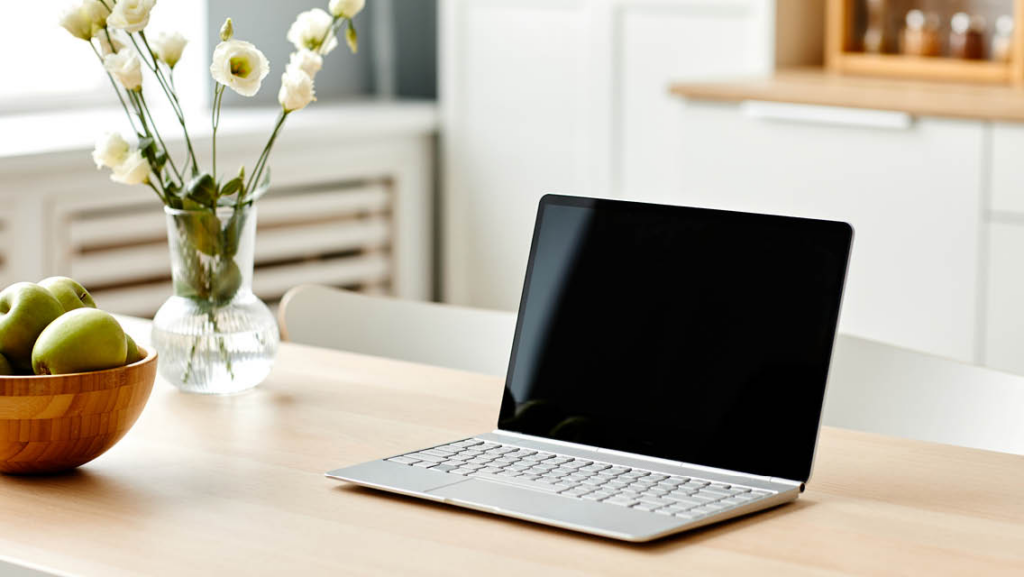In the hyper-connected world, we constantly find ourselves bombarded by digital stimuli. From social media notifications to the allure of endless browsing, technology’s hold on our attention is undeniable. This constant digital influx can lead to feelings of overwhelm, anxiety, and a fragmented mental state. Here’s where digital minimalism emerges as a powerful tool to combat these issues and cultivate a calmer mind.
What is Digital Minimalism?
Digital minimalism is a philosophy that goes beyond simply reducing screen time. It’s a conscious approach to technology use, aimed at maximizing its benefits and minimizing its downsides in your life. Here’s a breakdown of the core principles:
Intentional Technology Use:
Digital minimalism is a shift from passive consumption to active control. It encourages you to ask yourself critical questions before engaging with any technology:
What value does this app or tool bring to my life? Does it help me connect with loved ones, learn new skills, or boost my productivity?
Does the time I spend using it outweigh the benefits? Be honest about whether an app is truly enhancing your life or simply a source of distraction.
Are there alternative ways to achieve the same goals with less technology? For instance, could a phone call be more efficient than a lengthy email exchange?
Decluttering Your Digital Landscape:
This goes beyond just uninstalling unused apps. It’s about creating a streamlined and organized digital environment that minimizes friction and maximizes focus. Here’s what this might entail:
App Consolidation: Identify apps with overlapping functionalities and keep only the one that best suits your needs.
Streamlining Information Intake: Unsubscribe from unnecessary email lists and social media notifications that don’t add value.
Curating Your Feeds: Actively choose the content you consume on social media platforms. Unfollow accounts that trigger negativity or are irrelevant to your interests.
Organizing Files and Information: Implement a clear system for storing and organizing digital files. This reduces clutter and makes it easier to find what you need.
Focus on Quality over Quantity:
Digital minimalism isn’t about shutting yourself off completely from the digital world. It’s about prioritizing high-quality interactions over mindless consumption. Here’s how to achieve this:
Batching Tasks: Instead of constantly checking emails and social media, dedicate specific times to respond to messages and engage with online platforms.
Deep Work Sessions: Schedule uninterrupted blocks of time where you turn off notifications and focus on demanding tasks that require your full attention.
Mindful Consumption: Approach online content with a critical eye. Ask yourself if the information you’re consuming is reliable, relevant, and contributes to your goals.
Why Embrace Digital Minimalism?
Digital minimalism isn’t just about spending less time staring at screens. It’s a holistic approach that unlocks a cascade of positive effects on your mental and physical well-being. Here’s a deeper look at the benefits you can reap by embracing this philosophy:
Enhanced Focus and Laser-Sharp Productivity:
Our brains are marvels of evolution, but they weren’t designed for the constant barrage of digital stimuli we face today. Imagine trying to concentrate on writing a complex report while pinged with notifications, social media updates, and the allure of endless online browsing. This digital ping-pong game fragments our attention, hindering our ability to enter a state of “flow” – a zone of deep focus where we can tackle demanding tasks with laser-sharp accuracy and efficiency.
Digital minimalism empowers you to break free from this cycle of distraction. By:
Minimizing notifications: Silencing unnecessary alerts allows you to dedicate uninterrupted time to focused work.
Scheduling “deep work” sessions: Block specific periods in your calendar for focused work, free from distractions, allowing you to delve into complex tasks without interruption.
Utilizing time management techniques: Techniques like the Pomodoro Technique (working in focused 25-minute intervals with short breaks) can further enhance your focus and boost productivity.
Reduced Stress and Anxiety for a Calmer Mind:
The relentless pressure to stay connected and the fear of missing out (FOMO) fueled by social media can be a significant source of chronic stress and anxiety. The constant stream of curated feeds showcasing other people’s seemingly perfect lives can leave us feeling inadequate and overwhelmed. Additionally, the pressure to constantly be “available” online can lead to exhaustion and a sense of never truly being able to disconnect.
Digital minimalism empowers you to disconnect from this digital pressure cooker. By:
Creating tech-free zones: Designate specific areas in your home, like your bedroom, as tech-free havens where you can unwind and de-stress without the allure of screens.
Establishing boundaries: Set clear boundaries around your digital availability. Communicate to friends, family, and colleagues that you won’t be responding to messages outside designated times, allowing yourself dedicated periods of uninterrupted relaxation.
Prioritizing sleep hygiene: Implement a relaxing bedtime routine that excludes screen time the hour before bed. This allows your body to wind down naturally and promotes the production of melatonin, a hormone crucial for regulating sleep and reducing stress.
Improved Sleep Quality for a Restful Recharge:
The blue light emitted by electronic devices before bed disrupts the production of melatonin, a hormone that regulates our sleep-wake cycle. Exposure to blue light in the evening can trick your body into thinking it’s daytime, suppressing melatonin production and hindering your ability to fall asleep easily. This can lead to fragmented sleep, leaving you tired and groggy throughout the day.
Digital minimalism encourages creating a relaxing bedtime routine that excludes screen time. By:
Powering down electronics: Avoid using electronic devices like phones, laptops, and tablets for at least an hour before bed.
Dimming the lights: Create a calming sleep environment with dimmed lights to signal your body that it’s time to wind down.
Engaging in relaxing activities: Read a book, take a warm bath, or practice relaxation techniques like meditation or deep breathing before bed.
Boost Creativity and Critical Thinking:
Our brains are wired for both focused attention and creative exploration. However, the constant stream of curated content and information overload bombards our minds, leaving little room for independent thought. This digital deluge can stifle our ability to think critically and creatively.
Digital minimalism acts as a catalyst for innovation by:
Creating Space for Introspection: By taking mindful breaks from technology, you allow your mind to wander freely. This undirected thinking fosters a “cognitive incubation” – a subconscious process where ideas simmer and connections are made. This can lead to sudden bursts of inspiration and the development of original ideas.
Encouraging Curiosity and Exploration: Free from the constant stream of pre-digested information online, digital minimalism encourages you to become more curious about the world around you. You’re more likely to engage in activities that spark your imagination, such as reading in-depth articles, visiting museums, or pursuing hobbies that challenge you to learn new skills.
Promoting Problem-Solving Skills: Digital minimalism fosters a “do-it-yourself” mentality. Instead of relying on readily available online solutions, you’re encouraged to tackle problems head-on. This strengthens your critical thinking skills and allows you to develop innovative approaches to overcoming challenges.
Increased Self-Awareness:
Digital minimalism isn’t just about reducing screen time; it’s about cultivating a conscious relationship with technology. By taking a step back and evaluating your digital habits, you gain valuable insights into how technology impacts your well-being. This self-awareness empowers you to make informed decisions about your digital environment.
Here’s how digital minimalism fosters self-awareness:
Understanding Your Digital Triggers: Through introspection and app usage tracking, you can identify which apps and online activities drain your energy or contribute to feelings of anxiety or FOMO.
Recognizing Unconscious Habits: Digital minimalism encourages you to become mindful of automatic behaviors, like checking your phone first thing in the morning or mindlessly scrolling social media before bed.
Empowering Informed Choices: With this newfound self-awareness, you’re empowered to make informed decisions about your digital environment. You can limit your time on specific apps, silence unnecessary notifications, or even take digital detox breaks to reset your relationship with technology.
Implementing Digital Minimalism:

Embracing digital minimalism is a journey, not a destination. It requires taking consistent steps and making adjustments as your needs evolve. Here’s a detailed roadmap to guide you:
1. Conduct a Digital Detox and Audit:
Track Your Screen Time: Utilize built-in device features or download screen time tracking apps to gain a clear picture of how much time you spend on various devices and applications. Identify patterns and pinpoint areas where you might be mindlessly scrolling.
Journal Your Tech Habits: For a week, keep a log of your app usage and online activities. Note the emotions associated with specific apps and how they impact your mood and productivity.
Identify the Culprits: Analyze your data and be honest about which apps genuinely enhance your life and which are simply time-sucks. Consider the following:
Does this app contribute to my goals and well-being?
Does the value it offers outweigh the time I spend on it?
Could I achieve the same benefits with a less distracting alternative?
2. Declutter Your Digital Landscape:
The App Cull: Ruthlessly uninstall apps you no longer use or that trigger feelings of anxiety or distraction. Be mindful of social media apps that contribute to comparison or negativity.
Consolidate Similar Apps: Do you have multiple apps for photo editing, music streaming, or note-taking? Evaluate their functionalities and keep only the one that best suits your needs.
Silence the Noise: Disable notifications for non-essential apps. Utilize features like “Do Not Disturb” mode during focused work sessions or create custom notification schedules to minimize interruptions.
Unsubscribe Mercilessly: Unsubscribe from email lists and social media accounts that no longer serve you. This reduces information overload and curates a digital environment that aligns with your interests.
3. Create Tech-Free Zones and Sacred Spaces:
The Tech-Free Bedroom: Banish all screens from your bedroom at least an hour before sleep. This promotes relaxation, allows your body to wind down naturally, and prepares you for a more restful night.
Designated Quiet Hours: Establish specific times in your day, perhaps during meals or evenings, when you completely disconnect from all devices. This allows you to be present in the moment and fosters deeper connections with loved ones.
The Digital Sabbath: Consider a weekly or monthly “digital detox” day where you completely disconnect from technology. This allows for introspection, recharges your mental battery, and fosters a renewed appreciation for the real world.
4. Embrace Focus Techniques and Batch Processing:
Focus Modes and Timeboxing: Utilize built-in focus modes on your devices or download time management apps to block distracting websites and silence notifications for dedicated work sessions.
Batch Processing: Instead of constantly checking emails and social media, designate specific times to respond to messages and engage with online platforms. This reduces the mental context switching that can hinder focus and allows for more efficient communication.
5. Cultivate Mindfulness and Make Conscious Choices:
Mindfulness Meditation: Integrate mindfulness practices like meditation into your daily routine. This enhances self-awareness and empowers you to make conscious choices about when and how you engage with technology.
The Pause Before You Pick Up: Develop the habit of pausing for a moment before reaching for your phone. Ask yourself if what you’re about to do is truly valuable or simply a mindless reaction to boredom.
Finding Joy Offline: Rediscover the simple pleasures of the real world. Engage in hobbies that don’t involve screens, spend time in nature, or connect with loved ones face-to-face.
Reclaiming Control Over Your Attention
Digital minimalism empowers you to take back control of your attention. By minimizing distractions and decluttering your digital space, you free yourself from the constant pull of technology. This allows you to be more present in the real world, cultivate a calmer mind, and live a more intentional life.
Remember, digital minimalism is a journey, not a destination. It requires ongoing evaluation and adjustment to fit your evolving needs. As you embark on this path, be patient with yourself and celebrate your progress.


